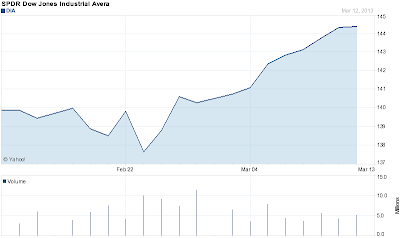Recession Omen - Consumer Confidence Collapse on Payroll Tax Hike
 By Markos N. Kaminis:
By Markos N. Kaminis:
Tuesday’s consumer confidence report could be offering important insight into the real impact of the payroll tax break expiration. Confidence soared once politicians got out of the way of the stock market. However, as Americans noticed shrinkage in their paychecks, the consumer view changed. The government itself thinks there should be a 1.5 percentage point drag on economic growth as a result, but in a consumer driven economy, everything is at stake.
The Conference Board reported its Consumer Confidence Index for March Tuesday morning. The index, which had gained more than 10 points last month on new hope for stocks and the economy, shed all of its gains this month I believe on the reality of lighter paychecks. Economists surveyed by Bloomberg were expecting a slight slippage in the index, to 68.0, from the 69.6 reported in February. What they got was a far worse result, with the Consumer Confidence Index falling nearly 10 points to 59.7.
Stocks ignored the recession warning signal, with all the broader indexes higher on the day, as gold retrenched. However, the ignorance of the major indexes was in the shadow of the move of a broader grouping of stocks measured by the iShares Russell 2000 (NYSE: IWM), which was only fractionally higher toward the close. That was against the 0.7% gain of the S&P 500 Index at 3:30 PM ET.
Broad Indicator
|
Tuesday Through 3:10 PM
|
SPDR S&P 500 (NYSE: SPY)
|
+0.7%
|
SPDR Dow Jones (NYSE: DIA)
|
+0.6%
|
PowerShares QQQ (Nasdaq: QQQ)
|
+0.4%
|
iShares Russell 2000 (NYSE: IWM)
|
+0.1%
|
SPDR Gold Shares Trust (NYSE: GLD)
|
-0.3%
|
The Confidence Report showed that the consumer view for the current situation fell off. The Present Situation Index dropped to 57.9, from 61.4. Still, the news about the future was even worse. The Expectations Index collapsed to 60.9 from 72.4 last month.
In the past I’ve talked about the importance of the Present Situation measure versus the Expectations measure. We want to see improvement in the present situation to realize real economic gains. Stocks may move on “expectations” just as well though. Still, we cannot really consider this measure as a good gauge of the economy unless the overall gain is driven by the Present Situation Index. Expectations can change on a whim, for instance on the passing of the fiscal cliff or the debt ceiling issues.
The truth today is that Americans are seeing smaller paychecks because of the expiration of the payroll tax break. This was made real for me when last week I shared a meal with a maintenance worker from my church. Vangelis told me that he no longer liked President Obama, because his taxes went up. When Americans feel like they’re poorer, they are less likely to spend. With so many just getting by, a little less income makes a big difference. Also, the expiration of the tax break is not viewed as such, but as a tax increase by people who are not following the complicated news flow. Tax hikes have a way of killing spending, whether they are real or perceived.
Last week, I talked about the Fed’s economic forecast, which were hardly changed even despite their own acknowledgement that the payroll tax break expiration and the sequester spending cuts could burden economic growth by as much as 1.5% this year. I said The Fed’s Math Just Doesn’t Add Up. What might add up though is if consumers stop spending, as indicated by the sentiment result Tuesday. Then the Fed’s nearly unchanged GDP expectation for 2.3% to 2.8% growth this year could also be exposed. Make no mistake about it, in this consumer driven economy, the March message from consumers could signal a recession. I’ll be following this week’s GDP revision and Personal Spending data so you may want to follow along.
Please see our disclosures at the Wall Street Greek website and author bio pages found there. This article and website in no way offers or represents financial or investment advice. Information is provided for entertainment purposes only.
Labels: consumers, Consumers-2013-Q1, Economy, Economy-2013-Q1, Editors_Picks, Editors-Picks-2013-Q1, Featured, Featured-2013-Q1, Syndicate





























